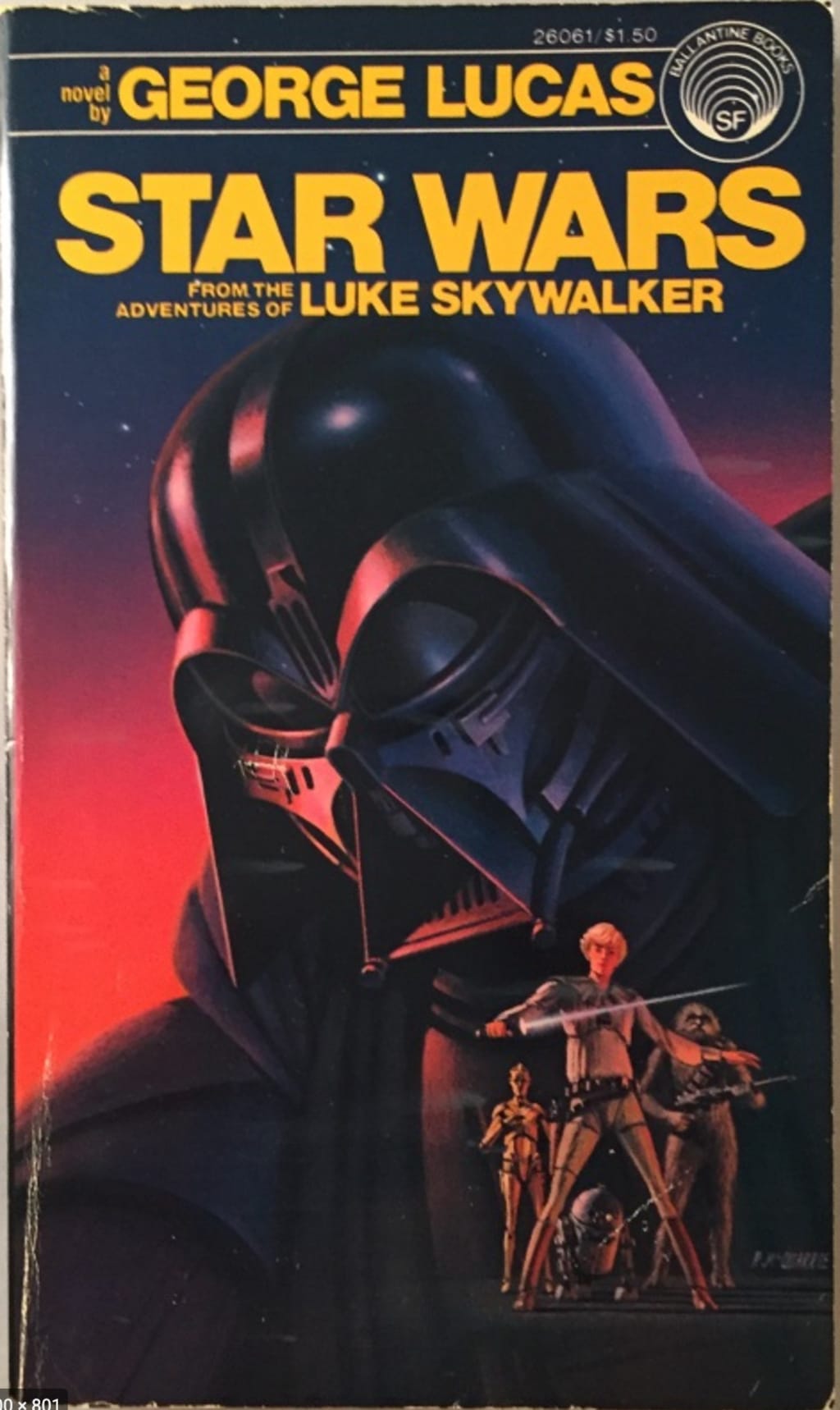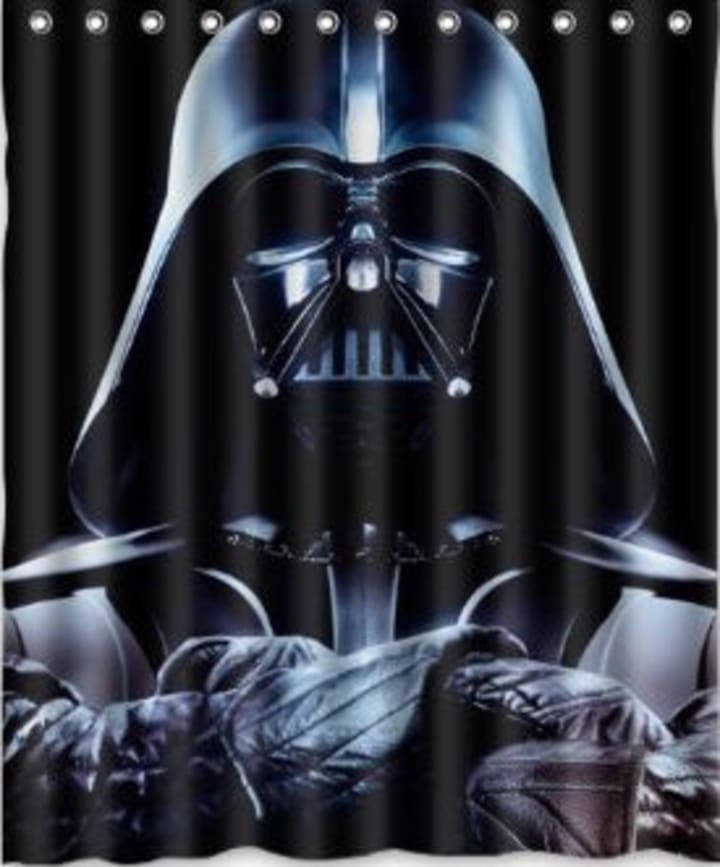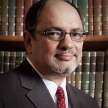
The original Star Wars movie premiered on May 25, 1977.
In November of 1976, I picked up a new science fiction novel called “Star Wars: From the Adventures of Luke Skywalker” by George Lucas. I did not know at the time that it was ghost-written by Alan Dean Foster, a popular sci-fi writer.
The following May, the movie debuted in only 40 theaters around the country, with little of the advanced fanfare we are used to today. But word of mouth spread fast, and when I heard it was showing at the Coronet Theater in San Francisco, I went with my buddies. The line to get in stretched around the block, even during the first week. When I first saw the Imperial Star Destroyer come across the screen after the title scroll, I yelled out, “I’m impressed!”
On my way out of the theater, a reporter stopped me for a radio interview. “Did you think it was fun?” As I began to explain its relative place among Science Fiction novels and films, he interrupted again and asked,
“But was it fun?”
“Yes,”
I said, but it was so much more. I would return several times to see it again. Star Wars ran there at the Coronet for 29 weeks. The new Star Wars movies now open in over 10,000 theaters in the US. How times have changed.
Star Wars Movie
The original Star Wars was not expected to be a success, far from it. The studio was not optimistic, hence only 40 opening theaters. The head of 20th Century Fox at the time was Alan Ladd, Jr. He agreed to produce the film with an initial $8M budget because he was impressed with George Lucas’ 1973 film American Graffiti.
Even Lucas was not hopeful. Instead of going to the opening, he went to Hawaii with his friend Stephen Spielberg to commiserate. While there, they conceived of the Indiana Jones movies, named after Lucas’ dog, which was subsequently filmed there. It would make Harrison Ford a much bigger star than he would have been as just Han Solo.
Success of Star Wars

The general pessimism about the movie allowed George Lucas to take a small salary, but he negotiated the retention of a sizable chunk of the merchandising rights. That first book turned into a book empire. The Star Wars Expanded Universe also includes comic books as well as games — board, video, online, and computer — plus TV and movies. There were t-shirts, toasters, lightsabers, bottle openers, headphones, tape dispensers, popcorn makers, action figures, watches, cups, pens, slippers, and class rings.

And lunch pails, shower curtains, and Underoos. The movie, in 1977, was considered either the #1 or #2 highest-grossing film of all time, perhaps behind Gone with the Wind, adjusted for inflation. More recently, however, it’s dropped to #4 adjusted for inflation, at just over $3B in today’s dollars.
Though George Lucas sold his Lucasfilm production company for $4B a few years ago to Disney, the total value of the franchise is over $30B. And Lucas holds the second-largest block of Disney stock, after the Steve Jobs family, who sold Pixar to them.
Star Wars is often compared to or at least contrasted with Star Trek. Indeed, I compare these two franchises in this article here. However, George Lucas was a fan of Star Trek, and the first Star Trek movie in the film franchise got a “green light” from the studio as a result of the success of Star Wars.
Star Wars at Disney

Speaking of Disney, they have featured a Star Tours ride at several of their parks around the world for many years. I visited that attraction at Disneyland Paris, in what is called Discoveryland. Additionally, each of the parks features heavy Star Wars themes in terms of music, shopping, and rides in their respective Tomorrowland. In recent years Disney has opened “Star Wars: Galaxy’s Edge” 14 acres of themed land at Disneyland and Walt Disney World.

Since the first film, I’ve seen all the subsequent films on the first day they came out. I had made the mistake of reading everything I could get my hands on between the first and second films — including the August 1977 issue of Rolling Stone — and it spoiled The Empire Strikes Back.
I’m more vigilant now about reading spoilers.
Non-canonical Order of Star Wars
I’ve recently re-watched the previous films, in what is called Machete Order: Episodes IV, V, II, III, VI. Why this order? The prequel trilogy is essentially back-story. Everything in Episode I that you need to know gets mentioned in Episode II. Episode III then provides more impact to Episode VI.

J.J. Abrams, who had a successful run at the recent Star Trek reboot films, co-wrote, directed, and produced Episode VII. There is in popular culture an unnecessary rivalry between Star Trek and Star Wars, but I like both. Star Wars differs from Star Trek in that the former spends less time on the science and features “lived-in” spaceships that are not military clean. Its themes are different, as well. While Star Trek always mirrored current-day political and social issues, Star Wars takes a more heroic or epic approach.
Star Wars Saga
Star Wars: Episode VIII – The Last Jedi, reviewed here, was written and directed by Rian Johnson who took yet another direction from J.J. Abrams, and did not answer all of the questions posed in Episode VII. For the final film of the saga Star Wars: Episode IX — The Rise of Skywalker, reviewed here, J.J. Abrams again took the writing and directing reigns, and put the saga back on track as it concluded.
Non-saga Star Wars
Meanwhile, other films that are non-saga “anthology” movies from the Star Wars universe include the prequel to Episode IV Rogue One: A Star Wars Story, reviewed here, and Solo: A Star Wars Story, not worth reviewing.
Power of Myth

It’s well known that George Lucas favored Joseph Campbell’s Power of Myth and the Hero’s Adventure. The first Star Wars movie picks that up as Luke wants “to become a Jedi like my father before me.” Themes of (Jedi) knights of the roundtable, squires (padawans, apprentices), and a fair princess to be rescued harken back to King Arthur’s court. In that way, it plays more to fantasy themes than traditional sci-fi themes.
And because it was “A long time ago in a galaxy far, far away” rather than the future, you see a parallel with the fall of the Roman Senate and its Republican form of government, to be replaced by a Galactic Empire and a dictatorial power-hungry Emperor. But you cannot miss the sci-fi homage to Isaac Asimov’s Foundation 1951 trilogy novels with its Galactic Empire. Nor Kurosawa’s The Hidden Fortress 1958 movie. Nor the drone robots (droids) from Douglas Trumbull’s Silent Running 1972 film.
We now have nine movies in the saga, but there will be more. And we’re reminded of Star Wars each year on May the Fourth.
Bill Petro, your friendly neighborhood historian
If you enjoyed this article, please consider leaving a comment. Subscribe to have future articles delivered to your email.
About the Creator
Bill Petro
Writer, historian, consultant, trainer
https://billpetro.com/bio






Comments
There are no comments for this story
Be the first to respond and start the conversation.